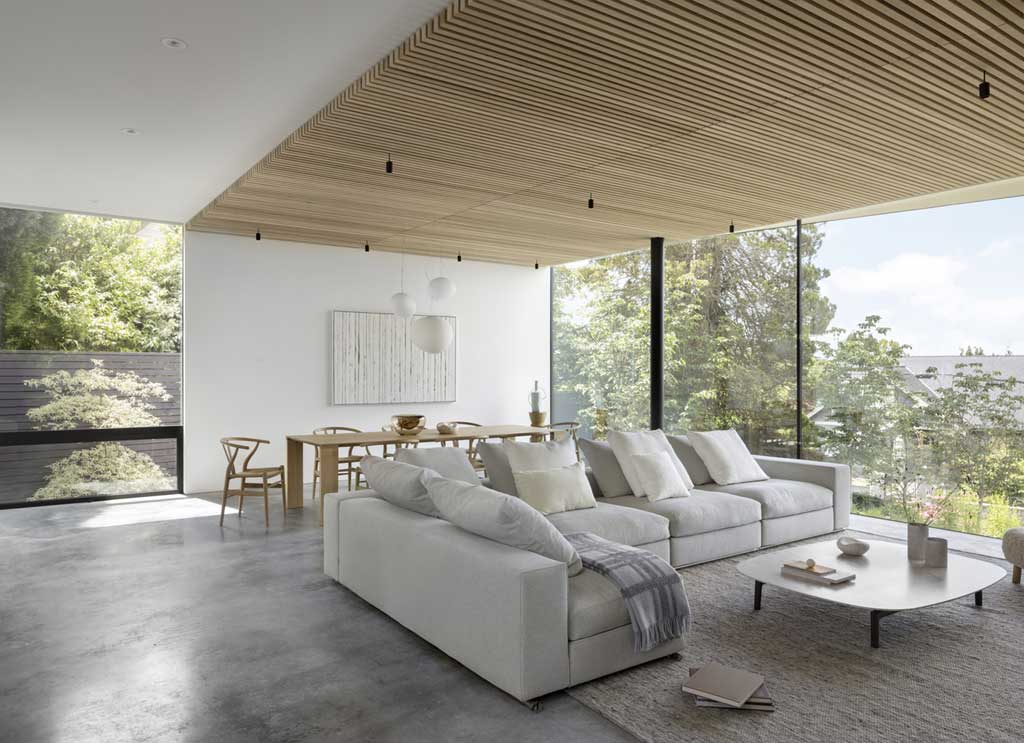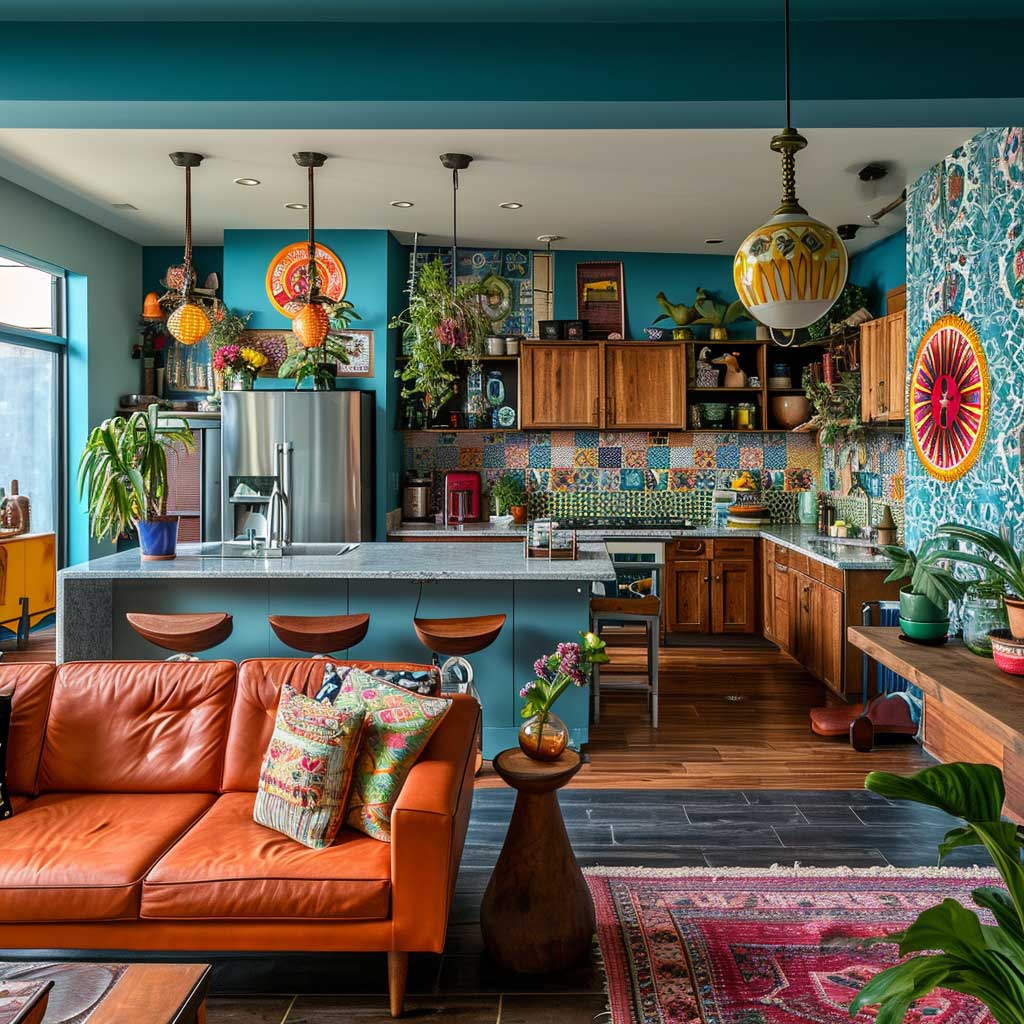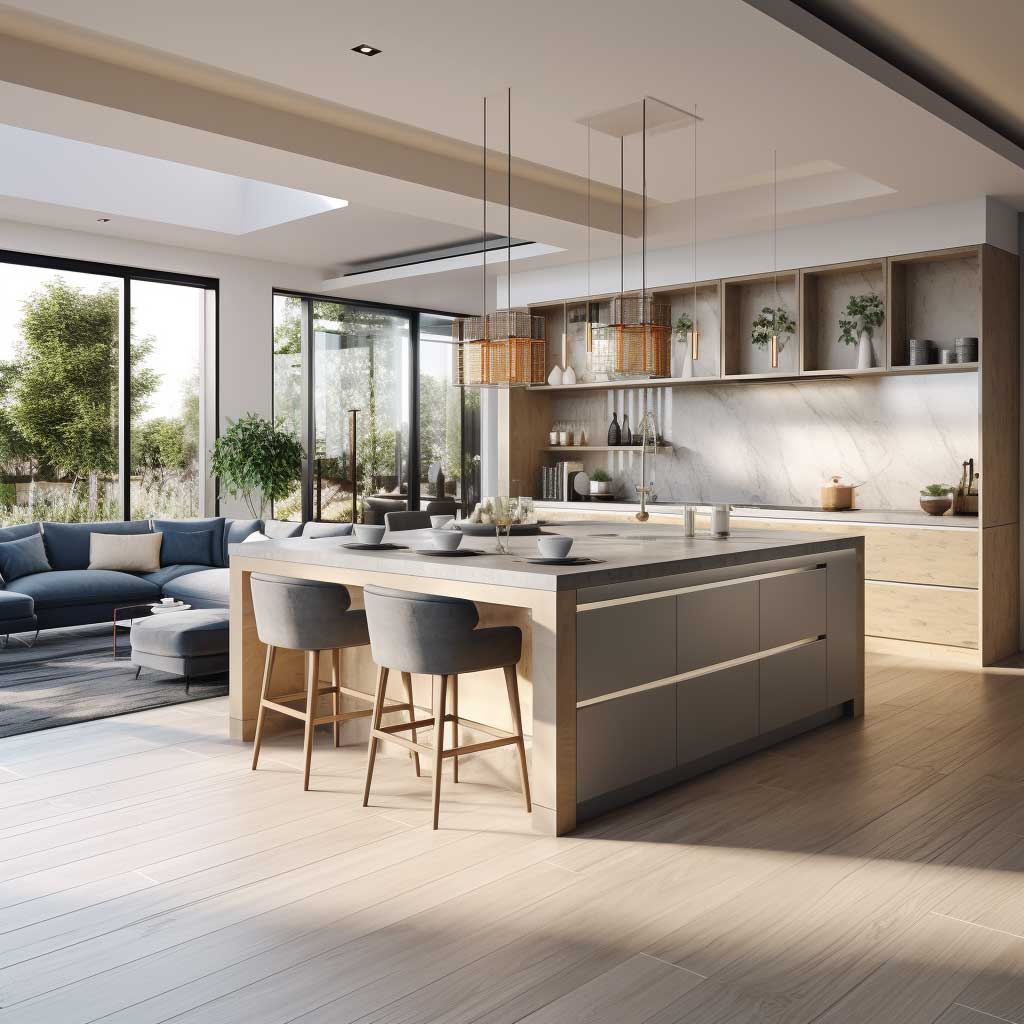In the heart of the forest, where nature’s canopy stretches wide and the air is filled with the earthy scent of pine and soil, a remarkable fusion of architecture and the natural world takes shape. Homes nestled in these wooded sanctuaries are not just structures; they are reflections of a desire to live harmoniously within the environment. Central to this philosophy is the design principle that embraces natural light as a vital, shaping force, illuminating open-plan living spaces and bringing the outside in.




| Architects | Marc Thorpe Design |
| Images | https://www.petrinistudio.com/ |
Glass as a Conduit for Light
The strategic use of glass in forest homes does more than offer a view; it creates a living painting that changes with the seasons. Winter’s soft light reflects off the snow, bringing a bright but gentle illumination to interiors. Spring introduces a palette of greens, which filter through the windows, casting dappled shadows across the floors and walls. In summer, the lush canopy offers a verdant frame for sunlight to pierce through, creating patterns that dance across the rooms. Come autumn, the golden hues of the forest bathe the home in warm, amber tones, making the transition between the exterior and interior spaces fluid and dynamic.
Open Spaces and Minimalist Design
The philosophy behind open-plan living in forest homes is not just about aesthetic appeal but also about fostering a connection with nature. This design approach emphasizes spaciousness and flexibility, allowing the home to adapt to the needs of its inhabitants while remaining in constant dialogue with its surroundings. Furniture is carefully chosen and placed to enhance this connection, with pieces that echo the outside world’s simplicity and raw beauty. The absence of walls ensures that from any point within the home, one can gaze out at the forest, feeling both sheltered and a part of the wilderness.




Wood Integrating Nature Within
Wood plays a dual role in these homes, serving both structural and decorative purposes. It provides strength and resilience, qualities mirrored in the towering trees outside. Inside, its presence is felt in the handcrafted furniture, the smooth countertops, and the intricate details that adorn the home, each piece telling a story of craftsmanship and care. This material’s versatility is celebrated, from the rustic charm of reclaimed beams to the sleek modernity of polished hardwood floors. Wood acts as a constant reminder of the home’s symbiosis with its environment, grounding the inhabitants in a sense of place and belonging.
The Role of Color and Texture
The interior color scheme is a reflection of the forest’s palette, with shades of green, brown, and gray bringing the outside in. These colors are complemented by textures that stimulate the senses — the roughness of stone, the softness of wool, and the grain of wood. Together, they create a tactile environment that invites exploration and interaction. Fabrics are chosen for their natural fibers, adding layers of warmth and comfort. The overall effect is one of understated elegance, a space that feels both sophisticated and welcoming, an extension of the natural world.




Living with the Forest
Living in a home that embraces natural light and the forest’s beauty is an experience that transcends ordinary life. It’s about waking to the soft glow of dawn as it filters through the trees, watching as the home comes alive with the day’s progress. It’s about feeling the subtle shifts in temperature and light, and witnessing the unfurling of seasons from the comfort of a room bathed in sunlight. This connection to the natural rhythms of the earth offers not just a place to live, but a way of life — one that is deeply attuned to the environment and the myriad ways it speaks to us.
Embracing Sustainability
Beyond aesthetics and comfort, these homes are a testament to sustainable living practices. The emphasis on natural light reduces the need for artificial lighting, while the use of renewable materials like wood and the integration of energy-efficient design principles underscore a commitment to minimizing environmental impact. Rainwater harvesting, solar panels, and geothermal heating systems are often incorporated, further reducing the home’s carbon footprint and reinforcing the ethos of living in harmony with nature.

Homes that harness natural light and blend seamlessly with their forest surroundings are more than architectural achievements; they are sanctuaries that offer a profound connection to the natural world. They remind us of the beauty that surrounds us, the importance of sustainability, and the potential for architecture to enhance our lives in meaningful ways. In these spaces, every moment — whether bathed in the golden light of sunset or the serene glow of moonlight — is a reminder of the extraordinary beauty that comes from marrying modern design with the timeless elegance of nature.






